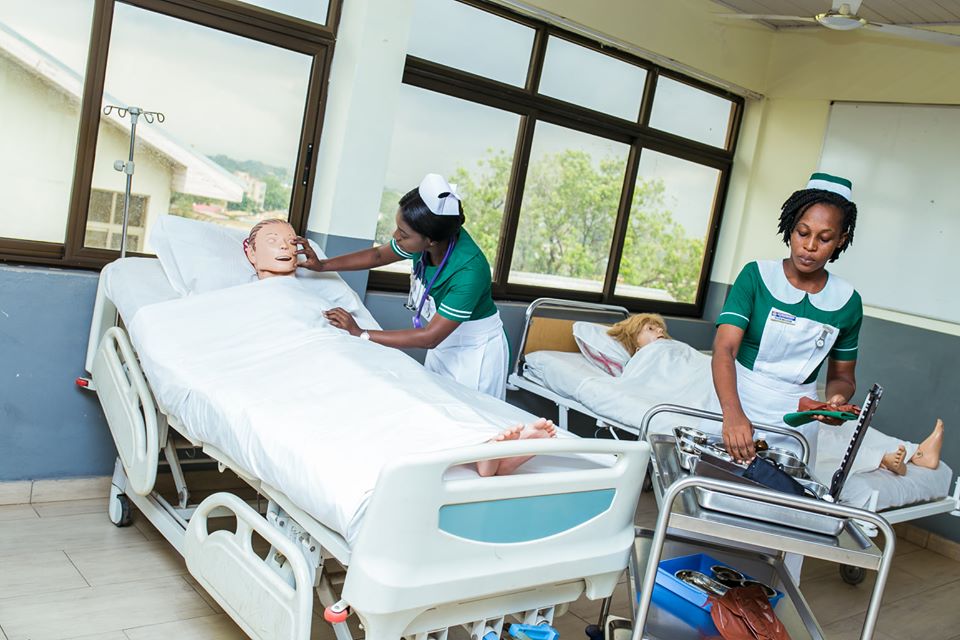
Course Summary: Practical Training and Examination
Introduction: The Practical Training and Examination course is a crucial component of our nursing program, designed to assess and validate the practical skills acquired by students during their clinical practicums. This course serves as a comprehensive evaluation of the application of theoretical knowledge in real-world healthcare settings.
Objectives:
-
Skill Assessment: The primary objective is to evaluate the proficiency of students in applying clinical skills acquired throughout their academic journey. This includes but is not limited to patient care, communication, and critical thinking in various healthcare scenarios.
-
Integration of Knowledge: The course aims to assess the integration of theoretical knowledge with practical skills. Students will be tested on their ability to translate classroom learning into effective and safe patient care practices.
-
Clinical Decision-Making: Emphasis will be placed on evaluating students' competence in making sound clinical decisions. This involves prioritizing patient needs, recognizing and responding to changes in health status, and implementing appropriate interventions.
-
Professionalism and Ethics: The course evaluates students' adherence to professional standards and ethical considerations in healthcare. This includes maintaining patient confidentiality, respecting cultural diversity, and upholding the principles of ethical nursing practice.
Course Components:
-
Clinical Skill Stations: Students will rotate through various skill stations, each focusing on a specific aspect of patient care. This may include medication administration, wound care, vital sign assessment, and other essential nursing procedures.
-
Simulated Patient Scenarios: Practical examinations will involve simulated patient scenarios, allowing students to demonstrate their ability to handle real-life situations. This provides a controlled environment for assessing clinical competence and decision-making skills.
-
Written Assessments: In addition to practical evaluations, students will be required to complete written assessments that test their theoretical knowledge related to the clinical cases presented during the examination.
Assessment Criteria:
-
Technical Competence: Evaluation of the precision and accuracy with which students perform clinical procedures and interventions.
-
Communication Skills: Assessment of effective communication with patients, families, and healthcare team members.
-
Critical Thinking: Evaluation of the ability to analyze and respond to complex clinical situations, demonstrating sound clinical judgment.
-
Professionalism: Assessment of adherence to ethical standards, respect for patients' rights, and professional conduct.
Conclusion: The Practical Training and Examination course serves as a pivotal assessment tool to ensure that our nursing students are well-prepared for the challenges of the healthcare profession. By successfully completing this course, students demonstrate their readiness to deliver high-quality and compassionate care to diverse patient populations.
- Teacher: DONETECH SOLUTIONS
- Teacher: DONETECH SOLUTIONS
- Teacher: DONETECH SOLUTIONS
- Teacher: DONETECH SOLUTIONS
- Teacher: DONETECH SOLUTIONS
- Teacher: DONETECH SOLUTIONS
- Teacher: DONETECH SOLUTIONS
- Teacher: DONETECH SOLUTIONS

This course is designed to provide a basic awareness of child protection including signs and
symptoms, likely behaviours, do’s and don’ts and recording processes to equip learners with the
knowledge to be able to safeguard children and young people. The course also allows learners to
look at the wider picture and to understand that protecting children is a proactive activity as well
as reactive reporting.
- Teacher: DONETECH SOLUTIONS

The comprehensive study of the anatomy and physiology of the human body. Topics include the endocrine system, cardiovascular system, lymphatic and immune system, respiratory system, digestive system, urinary system, reproductive system, and fluid, electrolyte, and acid/base balance. Laboratory study includes microscope work, substantial organ and animal dissection, and experiments designed to illustrate normal function and physiologic responses to specific stresses. Designed for students in Nursing, Radiologic Technology, and other health-related programs.
Course Learning Outcomes
1. Use appropriate terminology related to human anatomy in selected organ systems.
2. Use appropriate terminology related to human physiology in selected organ systems.
3. Identify selected anatomical structures within the human body in selected organ systems.
4. Explain selected physiological functions in selected organ systems.
5. Explain the principle of homeostasis as it relates to selected human physiological processes.
6. Explain how feedback loops are used to control selected human physiological systems.
7. Explain selected anatomical and physiological interrelationships in selected organ systems.
8. Demonstrate or explain laboratory procedures used to evaluate selected physiological functions in selected organ systems.
9. Explain selected physiological processes used to regulate fluid balance in the body.
10. Explain selected physiological processes used to regulate pH in the body.
- Teacher: DONETECH SOLUTIONS
